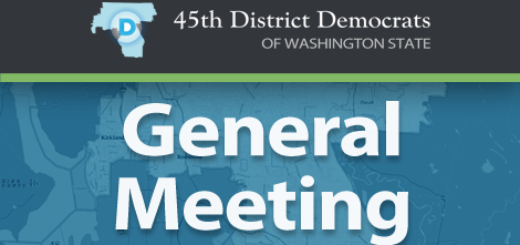Building Neighborhood Mutual Aid: A Practical Guide
Introduction
Mutual aid is a form of political participation in which people take responsibility for caring for one another and changing political conditions. Unlike charity, mutual aid projects are characterized by a desire to address the root causes of social problems, and they’re typically organized by the people who are affected by those problems.
This guide offers a framework for creating sustainable neighborhood mutual aid networks, drawing on historical examples and contemporary practices.
Understanding Mutual Aid
What Mutual Aid Is (and Isn’t)
Mutual aid is:
- Reciprocal support among community members
- Horizontally organized rather than hierarchical
- Directly addressing needs without bureaucratic intermediaries
- Building community power and collective resilience
Mutual aid is not:
- Charity (which often maintains power imbalances)
- Government assistance programs
- NGO-led initiatives with top-down decision making
Historical Context
Mutual aid has deep historical roots across cultures and movements:
- Black Panther Party’s free breakfast programs
- ACT UP’s care networks during the AIDS crisis
- Indigenous communal support systems
- Labor union strike funds and community kitchens
- Recent COVID-19 pandemic response networks
Getting Started
1. Identify Community Needs
Begin by understanding what your community needs most:
- Host listening sessions or informal gatherings
- Conduct simple surveys (online or in person)
- Observe common challenges in your neighborhood
- Talk with elders and long-time residents about historical needs
Key questions to ask:
- What resources are people struggling to access?
- What skills and resources already exist within the community?
- What immediate needs could be addressed with current capacity?
2. Find Your People
Mutual aid requires collective action:
- Start with friends, family, neighbors you already know
- Reach out through existing community spaces (libraries, religious institutions, community centers)
- Use digital platforms (neighborhood apps, social media groups)
- Put up flyers in visible community spaces
- Partner with existing community organizations
3. Structure Your Network
While mutual aid is non-hierarchical, organization is essential:
- Begin with a core group of committed individuals
- Establish communication channels (text groups, messaging apps, email lists)
- Create transparent decision-making processes
- Develop systems for tracking needs and resources
- Consider rotating roles to prevent burnout
Core Activities for Neighborhood Mutual Aid
Resource Sharing Systems
Food Distribution
- Community fridges/pantries
- Meal trains for new parents, ill neighbors, or people in crisis
- Garden sharing and produce exchanges
- Community gardening initiatives
Skill Sharing
- Tool libraries
- Repair cafés
- Childcare collectives
- Knowledge exchange workshops
- Language exchange programs
Transportation Networks
- Carpooling systems
- Rides to medical appointments
- Grocery runs for homebound neighbors
- Bike/wheelchair repair collectives
Crisis Response
Develop systems for responding to various community crises:
- Natural disasters
- Housing emergencies
- Medical emergencies
- Economic hardships
For each type of crisis, create:
- Communication protocols
- Resource mobilization plans
- Clear roles and responsibilities
- Connections to broader support systems
Community Building
Mutual aid networks are stronger when communities have deep relationships:
- Host regular community meals
- Organize block parties and cultural celebrations
- Create spaces for intergenerational connection
- Facilitate conflict resolution processes
- Hold regular check-ins and relationship-building activities
Sustaining Your Mutual Aid Network
Avoiding Burnout
Mutual aid is marathon work, not a sprint:
- Rotate leadership responsibilities
- Practice collective care
- Recognize and honor contributions
- Make space for rest and celebration
- Build systems that don’t rely on individual heroics
Addressing Conflict
Conflict is inevitable and can be generative:
- Establish community agreements early
- Develop transparent conflict resolution processes
- Practice transformative justice approaches
- See disagreements as opportunities for growth
- Revisit and revise systems that aren’t working
Expanding Your Impact
As your network grows, consider:
- Connecting with other mutual aid networks
- Advocating for policy changes that address root causes
- Documenting and sharing your practices
- Mentoring new mutual aid initiatives
- Building coalitions across different types of community groups
Practical Tools and Templates
Sample Needs Assessment
A simple form to identify community needs:
Resource Mapping Template
Create a community resource map identifying:
- Skills available within the network
- Physical resources
- Meeting spaces
- Storage locations
- Emergency gathering points
- Neighbors with specific needs (with consent)
Conclusion
Neighborhood mutual aid networks represent one of the most powerful ways communities can build resilience, address immediate needs, and work toward systemic change. By focusing on reciprocal relationships rather than charity, mutual aid creates more dignified and sustainable systems of community care.
Remember that mutual aid is both ancient and evolving – the practices in this guide are starting points that should be adapted to your specific community context.
Further Reading and Resources
Books:
- “Mutual Aid: Building Solidarity During This Crisis (and the Next)” by Dean Spade
- “Emergent Strategy” by adrienne maree brown
- “The Revolution Will Not Be Funded” edited by INCITE! Women of Color Against Violence
Organizations:
- Big Door Brigade (resources for mutual aid organizing)
- Mutual Aid Disaster Relief
- It’s Going Down (mutual aid resources)
Digital Tools:
- Airtable (for resource coordination)
- Signal (secure messaging)
- Mutual Aid Wiki (crowdsourced resources)



